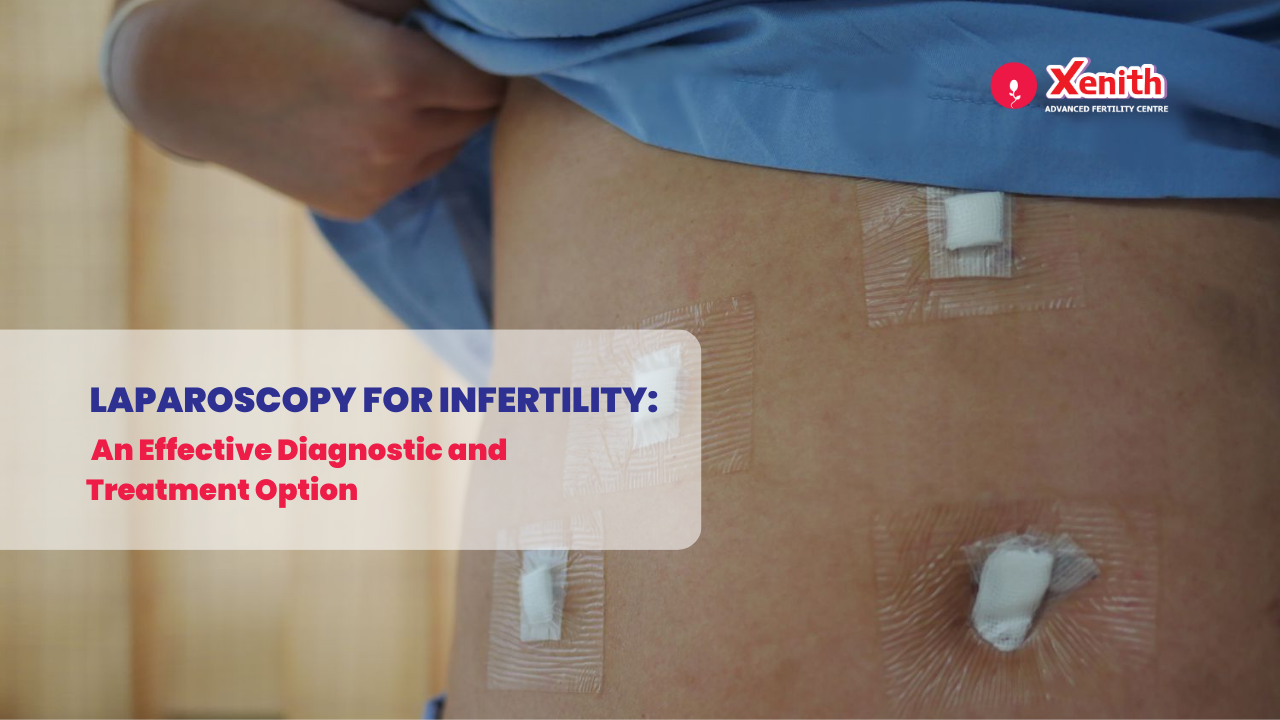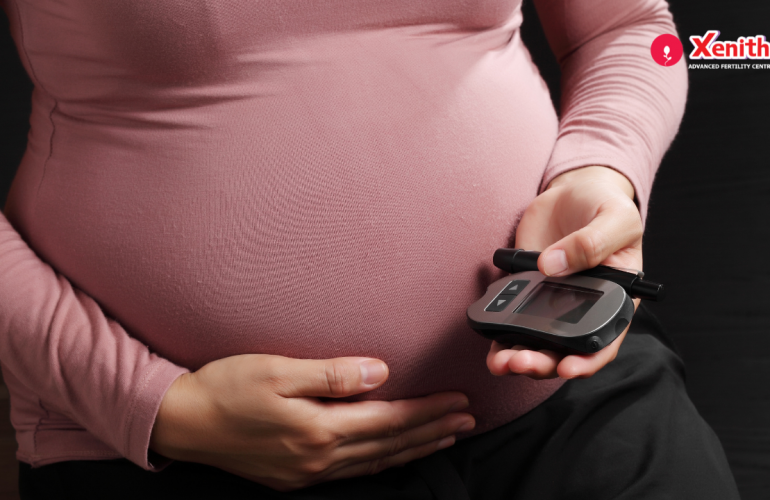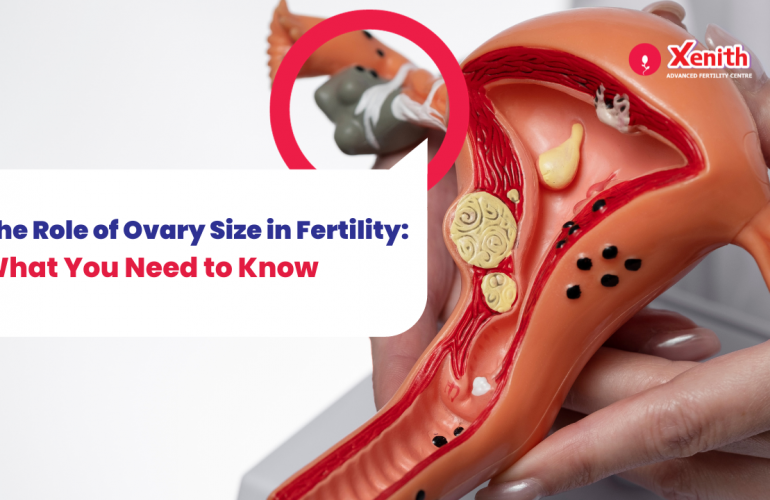Laparoscopy is a surgical procedure to look inside the abdomen or pelvis through small cuts in the abdomen instead of making a large incision in the belly to help the doctor determine the cause of the problem. It is done using a laparoscope which is a thin fiber optic tube with a light and a camera and other surgical instruments might also be used if treatment is needed at the same time. When laparoscopy is done for infertility purposes, the woman’s reproductive system like the uterus, fallopian tubes and ovaries are observed and then diagnosed and treated. Sometimes the cause of issues like pelvic pain or other issues with the reproductive system cannot be ascertained or might prove to be inconclusive via physical exam, ultrasound or other methods. Then, laparoscopy might be carried out to diagnose the problem.
Laparoscopy procedure
Laparoscopy is done under general anaesthesia and a small cut is made near the belly button. Carbon dioxide gas is passed through a needle to expand the abdominal area, allowing the surgeon to see more clearly and thus make their work easier. The laparoscope is inserted through the hole to inspect the organs to determine the cause of infertility. The camera in the laparoscope will transmit the image of the abdominal/pelvic cavity onto a monitor. If the cause is found, sometimes treatment might be also done at the same time by inserting other surgical instruments. Upon completion, the instruments as well as the gas are removed and the cuts are closed and sealed with a bandage. They will keep you under observation for a few hours and usually send you home on the same day depending on what procedure was done.
You will need to rest and avoid strenuous activity for a few days following the procedure. You may feel tired and may be sore around the incision areas after the laparoscopy. You may have pain in the back or shoulder due to some gas still remaining in your abdomen and this pain will go away in a day or so. You may also feel nauseated due to the anesthesia and also from all the probing that was done in your abdominal area. You can get back to doing your normal activities in a day or two, if it was a minor procedure or longer, depending on what was done.
Diagnostic laparoscopy for infertility
Diagnostic laparoscopy for infertility uses laparoscopy to find the cause of the problems like infertility or pelvic pain. Why might the doctor recommend diagnostic or operative laparoscopy for infertility? Here are some possible reasons:
- having severe menstrual cramps
- having pelvic pain or pain during sexual intercourse
- Endometriosis– is a disorder where tissue that is similar to the uterus lining is found outside of the uterus, usually on the ovaries, fallopian tubes, and other pelvic structures and it bleeds just like the uterine lining. This could cause pain, scarring, lesion formation and lead to infertility. So, the surgeon will look for any signs of scarring or other growths that might be causing pain or infertility.
- Pelvic inflammatory disease- is a sexually transmitted infection of the reproductive organs by bacteria like Gonorrhea or Chlamydia that could cause inflammation and cause scarring if not treated in time eventually leading to infertility, ectopic pregnancy and chronic pain in the pelvis. The surgeon will look for signs of inflammation and scarring.
- Previous Ectopic pregnancy is a pregnancy that occurs outside the uterus, usually in one of the fallopian tubes and this could have dangerous consequences if not treated immediately. If there is a history of previous ectopic pregnancy, it could mean unhealthy tubes for which a Laparoscopy may be suggested.
- Blocked fallopian tube– the fallopian tube is the structure which brings the sperm to the egg and then the fertilized egg goes back to the uterus for implantation for a successful conception. A blocked fallopian tube could lead to issues with infertility and could be caused by endometriosis, pelvic infection or other reasons. If the tube is partially blocked, it could allow the sperm to go through but not the fertilized egg to go back to the uterus for implantation and thus, it could cause an ectopic pregnancy. Laparoscopy is the most accurate way to diagnose this
- Fibroid – A fibroid is an abnormal growth in or around the uterus causing pain, distorting the uterine cavity, or blocking the fallopian tubes. Even though they are usually non cancerous, it could make it hard to conceive.
- Polycystic ovary syndrome (PCOS)-is caused due to hormonal imbalances and its symptoms could be the presence of fluid filled sacs or cysts in the ovaries, irregular periods, abnormal hair growth and other symptoms. An ovarian cyst could be suspected to cause pain or block the fallopian tubes. The PCOS ovaries might look like ping pong balls.
- Abnormality of uterus
Laparoscopy Treatments for Infertility
When the cause for infertility is diagnosed, it might be easier to treat it right away if possible. If the fallopian tubes are blocked partially with scar tissue, it could be removed. However, if it is blocked by large amounts of scar tissue, it might not be possible to remove the blockage. Issues with the shape of the uterus could also be rectified with laparoscopy. Fibroids, cysts, endometrial tissue or scar tissue could also be removed for biopsy purposes or taken out completely if they are small and fewer in number or they may need to cut the fibroids into smaller pieces before removal. For treating PCOS, they might first ask you to lose weight and try fertility medications in order to ovulate regularly. If this doesn’t work, they might resort to a procedure called ovarian drilling where a few holes are drilled into the ovaries to try to restore regular ovulation. Ovarian drilling is rarely done because it destroys part of the ovaries and reduces your ovarian reserve or the number of eggs you have left, if the drilling is excessive.
Advantages
Some of the advantages of laparoscopy include it is minimally invasive with smaller scars, shorter hospital stays, less pain and greatly reduced recovery time compared to open surgery. There is also a lower risk of infection, less trauma to organs and fewer complications. One can also diagnose and treat the issue in one go.
Frequently Asked Questions (FAQs)
- What are the risks?
Sometimes problems might occur with laparoscopy like internal bleeding or bleeding at the incision site, infection or damage to an organ. Laparoscopy might take longer than an open surgery and so you could be under anesthesia for a longer period of time. Surgery could relieve the pain but its also possible for the pain to return after a few years.
- What should I watch out for after laparoscopy?
Contact your doctor immediately if you have severe pain, fever, heavy bleeding, or if you aren’t able to empty your bladder.
- What are the chances of the procedure being successful in treating infertility?
The success rate depends on what issue was, the patients age and varies from individual to individual. Speak to your doctor about this. Laparoscopy could thus play an important role in diagnosing and treating some causes of infertility so that you can improve your chances of getting pregnant either naturally or with fertility treatments. If you are dealing with infertility and have questions on how to deal with it, talk to the experts at Xenith Advanced Fertility Centre.




